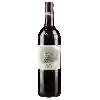
Winery OenoallianceBaron d'Orcel Rouge
In the mouth this red wine is a powerful with a nice balance between acidity and tannins.
This wine generally goes well with poultry, beef or veal.
Taste structure of the Baron d'Orcel Rouge from the Winery Oenoalliance
Light | Bold | |
Smooth | Tannic | |
Dry | Sweet | |
Soft | Acidic |
In the mouth the Baron d'Orcel Rouge of Winery Oenoalliance in the region of Bordeaux is a powerful with a nice balance between acidity and tannins.
Food and wine pairings with Baron d'Orcel Rouge
Pairings that work perfectly with Baron d'Orcel Rouge
Original food and wine pairings with Baron d'Orcel Rouge
The Baron d'Orcel Rouge of Winery Oenoalliance matches generally quite well with dishes of beef, veal or game (deer, venison) such as recipes of beef kidney, gigolette of rabbit or chicken waterzooi à la gantoise.
Details and technical informations about Winery Oenoalliance's Baron d'Orcel Rouge.
Discover the grape variety: Persan
Persan noir is a grape variety that originated in France (Savoie). It produces a variety of grape specially used for wine making. It is rare to find this grape to eat on our tables. This variety of grape is characterized by small bunches and small grapes. The Persan Noir can be found in several vineyards: South-West, Cognac, Bordeaux, Savoie & Bugey, Provence & Corsica, Rhone Valley, Loire Valley, Beaujolais.
Last vintages of this wine
The best vintages of Baron d'Orcel Rouge from Winery Oenoalliance are 2015
Informations about the Winery Oenoalliance
The Winery Oenoalliance is one of of the world's greatest estates. It offers 36 wines for sale in the of Bordeaux to come and discover on site or to buy online.
The wine region of Bordeaux
Bordeaux, in southwestern France, is one of the most famous, prestigious and prolific wine regions in the world. The majority of Bordeaux wines (nearly 90% of the production Volume) are the Dry, medium and Full-bodied red Bordeaux blends for which it is famous. The finest (and most expensive) are the wines of the great châteaux of Haut-Médoc and the right bank appellations of Saint-Émilion and Pomerol. The former focuses (at the highest level) on Cabernet Sauvignon, the latter on Merlot.
The word of the wine: Terroir
Strictly speaking, the notion of terroir corresponds to the geological characteristics of a vineyard. However, when we talk about terroir, we take into account the soil, the climate (even the microclimate), the flora, the fauna, and the human factor that characterizes the practices that make up the art of the craft.














